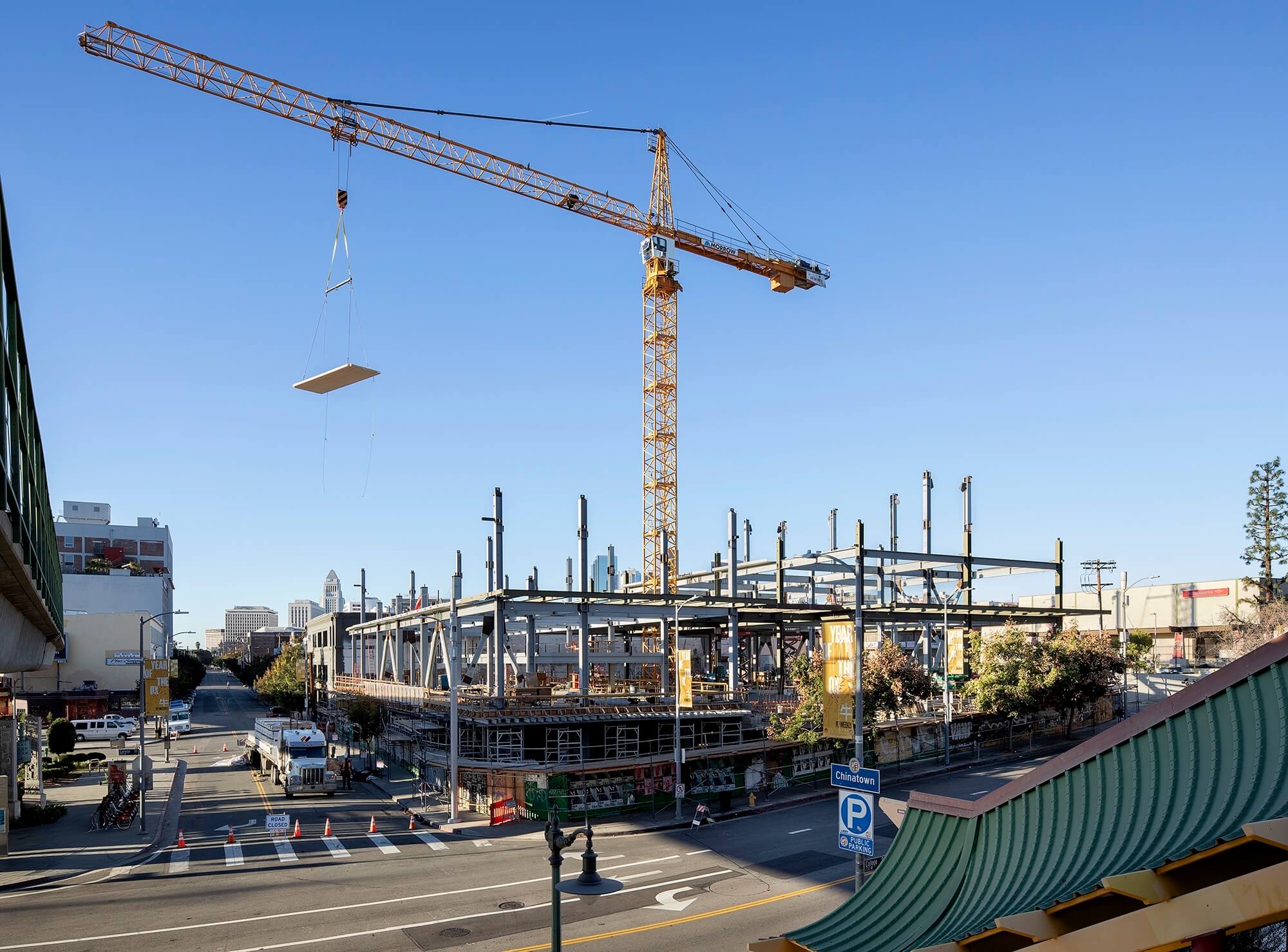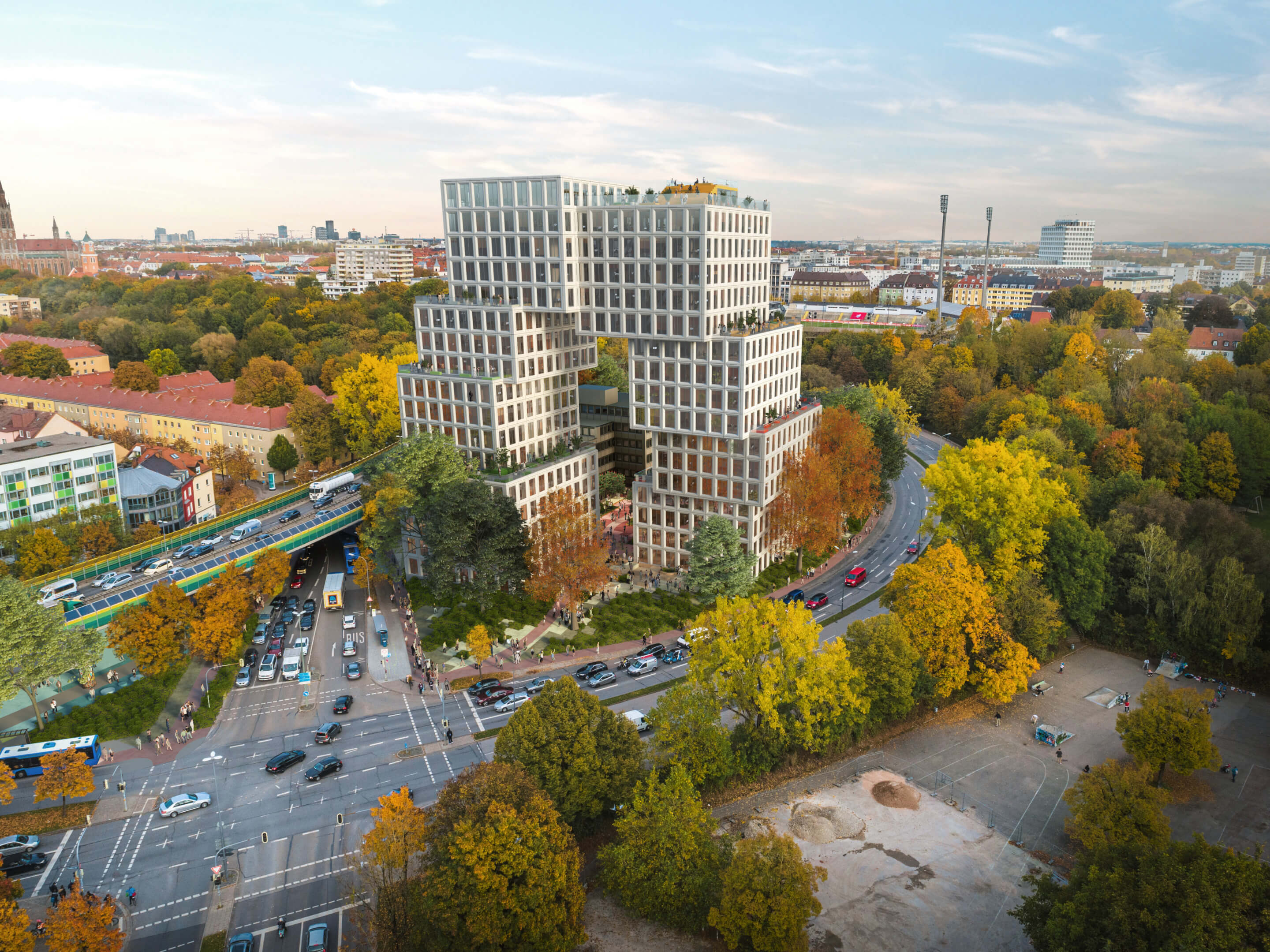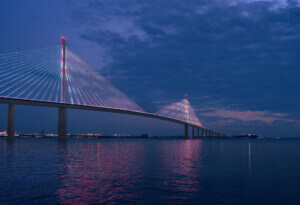Greetings and welcome to this Thursday’s edition of AN’s daily roundup of newsworthy goings-on. It’s been a busy post-holiday week so let’s dive right in, shall we?
Perkins Eastman’s Turkish House opens in Manhattan
The Turkish House, a 561-foot-tall skyscraper designed by Perkins Eastman, has officially debuted on a stretch of First Avenue in Manhattan opposite the United Nations known as Consulate Row. Per a press announcement, 180,000 square feet of the 220,000-square-foot Midtown high-rise serve as new offices for the Permanent Mission of Turkey to the United Nations and the Consulate General of the Republic of Turkey in New York. The remaining 40,000 square feet are dedicated to residential space. Also included are a consular branch office, exhibition space, auditorium, conference center, and prayer room. The shimmering, 35-story glass tower features a curved facade inspired by the Turkish flag, a tulip-shaped crown that pays homage to Turkey’s national flower, and other design elements that reference the country’s history and culture while setting the building apart from the “surrounding cityscape of rectilinear skyscrapers.” Construction work on the Turkish House kicked off in September 2017.
“The design team was thrilled to work on such a prestigious commission,” said Michael Lew, Perkins Eastman’s principal-in-charge of the Turkish House in a statement. “Given this tremendous opportunity, we wanted to design a contemporary, iconic building with reference to the proud heritage of the Turkish people.”
Indiana county approves temporary moratorium on solar farm applications
Commissioners in Delaware County, Indiana, have approved a temporary moratorium on new solar farm applications. The move enables officials to revisit an existing solar farm ordinance while local landowners voice their concerns about a pair of previously green-lit solar projects set to rise in rural Washington Township. As reported by Indianapolis-based WFYI, county officials approved tax abatements for the two forthcoming solar farm projects this past October. Expected to create hundreds of temporary construction jobs and a decent handful of permanent jobs when completed, work on the two renewable energy projects is anticipated to kick off in 2023 and 2024.
Area landowners, whose properties will not be leased to make way for photovoltaic arrays, claim that they were not notified in advance about the sprawling farms. They also hold concerns about declining property values, well water pollution via “toxic” panels, and the loss of active farming ground and some fear that the abatements will impact property tax-reliant local schools. While the pause is set to expire in late February, commissioners are asking for “increased setbacks between any solar panel and the adjoining property, changes in fencing requirements, and procedures to deal with any damaged solar panel that may leak substances,” per WFYI.
H/t to WFYI
A mass timber hybrid project in L.A.’s Chinatown takes shape
Set to be one of the largest cross-laminated timber (CLT) projects in all of Los Angeles, 843 Spring Street, a five-story office and retail building located opposite the Chinatown Metro station, has reached a significant construction milestone: the installation of the first of what will ultimately be 82,000-square-feet of CLT panels. In addition to its hybrid timber construction, the 122,000-square-foot building designed by LEVER Architecture will also feature rooftop solar panels, over 200 on-site bike stalls and EV charging stations, the use of “biophilic materials inside and out,” and a tiered vertical garden courtyard designed by James Corner Field Operations that will be irrigated by a 150,000-gallon rainwater catchment basin.
“Working with Redcar Properties and James Corner Field Operations, we set out to create a new type of office experience that connects contemporary modes of working to Los Angeles’ incredible climate,” said Thomas Robinson, founding principal of LEVER Architecture, in a press release. “For the first time, landscape and large scale mass timber construction unite to bring Los Angeles a unique, transit-oriented workspace. 843 N Spring Street’s sustainable design provides a new type of space where creative work can flourish.”
Joining LEVER Architecture, James Corner Field Operations, and developer Redcar Properties on the project is builder Shawmut Design & Construction. AN will check back in on 843 Spring Street when it reaches completion later this year.

Backers open wallets for fundraising campaign against SoHo/NoHo rezoning
A GoFundMe campaign raising legal funds against former New York City Mayor Bill de Blasio’s SoHo/NoHo Neighborhood Plan is picking up steam. As of this writing, the campaign, dubbed the Coalition for Fairness in SoHo and NoHo, has raised $164,505 of its $300,000 goal since first launching on December 2 ahead of the controversial rezoning scheme’s December 15 passage by New York City Council via a 43–5 vote.
As outlined on the GoFundMe page, the campaign’s key objectives are, among others, to “protect the rights of working families and artists living in SoHo or NoHo, whether conforming or not, to remain in their homes without onerous fines and impossible and unnecessary conversion impositions” and to “oppose New York City’s blunt rezoning efforts, which will not lead to any affordable housing in SoHo and NoHo, but will lead to oversized commercial uses and private university dorms.” The campaign notes that all funds will be withdrawn into a dedicated bank account and be used to pay for legal expenses, including a retainer for an attorney, along with public outreach costs, government relations, and other related expenses. The Village Sun has the full scoop here.
H/t The Village Sun
MVRDV’s Candid-Tor in Munich is anchored by two boxy, top-connected towers
Never-boring Dutch firm MVRDV has revealed its latest German project: Candid-Tor, a sweeping redevelopment scheme slated for Munich that entails the renovation of multiple existing buildings and, most notably, the construction of two leaning, stacked-block towers that are fused at the top to form a single 210-foot-tall structure. Per the firm, the conjoined-at-the-top towers, which together form “a gate” between them, will enable the Candidplatz-adjacent project to “become a landmark that helps to define the surrounding area and joins a series of other sculptural landmarks forming a chain on the east side of the river Isar.” In addition to the medical- and office-centric functions of the existing buildings that will be rehabilitated, the complex is also set to include restaurants, a crèche, eldercare facilities, fitness studio, and cultural and community center. A landscaping overhaul will also better connect the ring road-encircled site with the surrounding neighborhood.

South Korea will aid Cambodia in building a “Friendship Bridge”
The governments of South Korea and Cambodia unveiled further details of a planned “Friendship Bridge” that will span the Mekong River as a means of linking the Cambodian capital city of Phnom Penh with the largely rural Arey Ksat area to the east. Meant to spur development, attract visitors, and demonstrate goodwill between the two Asian countries, the bridge is still in the early planning stages as an unnamed South Korean company embarks on initial studies and cost analyses at the proposed site. Park Heung-kyeong, South Korea’s ambassador to Cambodia, teased the project at a recent event, stating: “I believe the Cambodia-Korea Friendship bridge will not only help to solve the traffic congestion problem at the centre of Phnom Penh … it will also become a tourist site attracting visitors to the capital.” Currently, Phnom Penh and Arey Ksat are connected by a ferry across the Mekong River.
H/t to Global Construction Review











